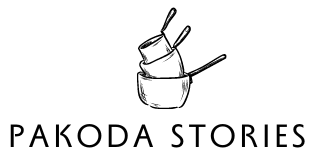The Classic Monopoly Board Game is now specially made for your little one’s favorite cartoon character – Peppa Pig! Same classic board, easier rules. Find out what’s different in this in-depth Monopoly Board Game Review of the Junior Edition!
Who is Peppa Pig?

Peppa Pig is a cute British animation series centered on an anthropomorphic pig family. The show is named after the main character who is roughly 4 years old and revolves around the life of a 4-year-old girl and her interactions with family and society. From visiting grandparents, taking part in playgroups, and playing in muddy puddles (Peppa’s favorite thing to do), we witness a typical 4-year-old girl go through life lessons from acts of kindness to friendship.
Who will like Peppa Pig?
Young children ages 4 & up
What’s included in Monopoly Junior – Peppa Pig Edition box?
- 1 game board
- 1 die
- Chance Cards
- Game Money (Paper)
- Character Figurines
- Peppa Pig Tokens



What are the rules/instructions for Monopoly Junior?
The instructions for Monopoly Junior are fairly simple. At the start of the game, each player picks a character. Like classic Monopoly, we throw the die, take the given number of steps, and perform the action. Unlike the classic Monopoly where you are given Location cards, the Monopoly Junior eliminates location cards and replaces them with Peppa Pig token cards that you will simply place on your location as per your character. Jail is referred to as “Time Out” here. Another difference is the rent for each location is the same as the purchase price mentioned on the location. The game ends when a player goes bankrupt and the person with the most money wins!
Monopoly Board Game Review Peppa Pig Edition
Being someone who grew up playing Monopoly in my childhood, I definitely took it as a personal responsibility to introduce my daughter to the world of Monopoly. Obviously, things like rent and the lack of location cards are a bummer. There were definitely some missed moments that I personally enjoyed in classic Monopoly like holding the location cards made of thicker cardboard with me on purchasing a location or the ability to build houses and hotels. That said, this is the JUNIOR edition and is made for younger kids. And I can definitely say that my 5-year-old enjoyed this game thoroughly.
There are quite a few skills that your kids will learn with this board game. Here are some of the things that I believe kids can learn from this game.
- How to count
- How to buy stuff
- How to handle money and keep it safe
- How to pay up for expenses
- And finally last but not the least… How to deal with the mean spirit the game evokes in all of us when losing money!

My daughter loved this game mainly for the Peppa Pig theme. I was initially unsure if she would grasp the game with ease. But navigating Monopoly Junior is a breeze and I highly recommend it for kids aged 5 and up! She loved owning a piece of Peppa’s world and quietly enjoyed the independence she gained from managing the game money. On the whole, I would say Monopoly Junior was a super hit in our home!
My Rating
While you’re still here, do check out my book review for “Meet Yasmin” by Saadia Faruqi – another gem recommendation for younger kids! You can buy this incredible must-read book for your preschooler/kindergartener here!

